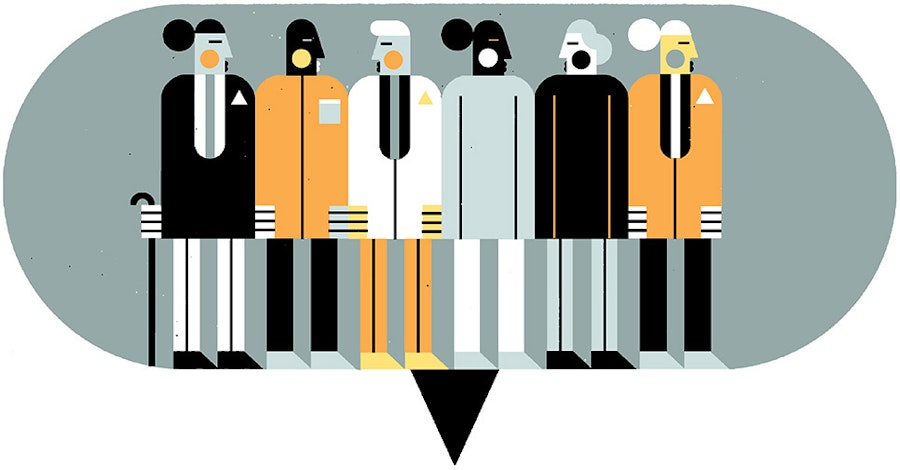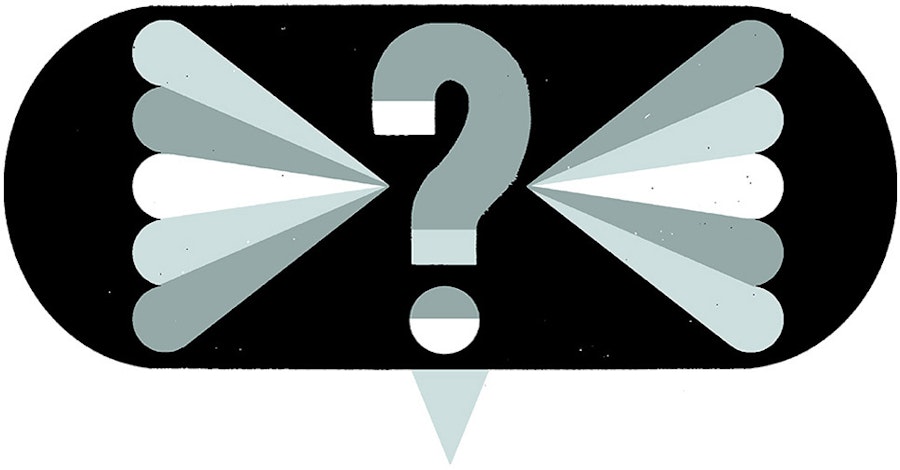The Three Qualities Leaders Need in an Uncertain Future
Add bookmark
If you ask executives today whether it’s their job to have the right answer, most would say yes. In fact, most would say that producing answers to critical challenges facing their organization is how they reached their high-level position. Who gets ahead by not knowing?
It’s time to challenge that notion. The ability to navigate ambiguity—and to guide people and organizations without knowing what’s ahead—will be one of the key leadership qualities of our time. Because, in today’s world, almost nothing is certain. Technological change is drastic and rapid; volatility grips politics, the economy, and the climate; the future of healthcare and education are in question. And much as it would be a relief to land on a quick fix for any number of these challenges, the reality is that solutions are a moving target, and no one leader possesses a silver bullet.
But creativity can help. According to the World Economic Forum, creativity is among the top three skills needed to thrive in 2020, along with other capabilities infused with the human touch: complex problem solving and critical thinking. In a world where thorny challenges have no magic solution, leaders must get comfortable with not having an answer—leaning into the unknown and establishing a leadership style that incorporates many perspectives, sustains optimism, and perseveres through ambiguity.
We call this approach creative leadership. The term has made the rounds in academic circles for decades, but in practice, it’s only now gaining recognition as an effective approach in today’s turbulent times. Creative leadership takes conditions that are anxiety-provoking for many, and turns them into opportunities. In certain industries, where frequent change is inherent, it’s not unusual to find leaders who fit the bill. But now we are seeing that creative leaders can spark change in any industry or on any team, from manufacturing to marketing to finance to food.
So what are those qualities that equip leaders to leverage ambiguity and drive progress? How do they show up in their day-to-day role and move their companies forward? There are three key tactics that creative leaders employ: building diverse, multidisciplinary teams to maximize perspectives; navigating ambiguity with bold ideas; and maintaining forward momentum by sharing optimism, empathy and inspiration.

1. Creative leaders convene diverse groups and rally them around tangible goals.
Among many industries facing uncertainty and change today, healthcare stands near the top. In 2015, Northern California-based Sutter Health hired its first Chief Innovation Officer to help guide its enterprise innovation strategy across their integrated healthcare system, which serves three million people in one of the most diverse regions in the country. Sutter tapped Chris Waugh, then the vice president of design at a young, innovative primary care provider called One Medical Group, to partner with them in transforming the healthcare experience to make it more simple, engaging and human.
As Sutter’s first chief innovation officer, Waugh admits he battled impostor syndrome. He’d worked in the health space for much of his career, but often on the design side (including a decade at IDEO), rather than embedded within a large healthcare organization. “Who was I to tell a surgeon what to do? These people do transplants and save lives. Why would they listen to me?”
His first step was to build a diverse, cross-functional team to pool knowledge and ideas. Every executive—from legal to human resources to operations to medicine—appointed an open-minded, collaborative senior staff member. Next, Waugh and his design and innovation team articulated an optimistic purpose: They would “touch one million lives by 2022,” providing better healthcare and services to patients and their families. Then with this lofty goal top of mind, Waugh identified the right places to start small and set constructive conditions under which they could start making a difference.
They began innovating in non-clinical areas, such as using car sharing services to help transport patients to appointments. The pilots aimed for achievable targets, impacting a small number of people in the first few months, setting the right conditions, then progressing to larger scale. “Starting small with constraints keeps you from thinking you have all of the answers at the beginning. You can be more experimental, test for consequences, increase creative confidence, and discover over time when you’re ready to go full scale.”

2. Creative leaders navigate ambiguity by leading with curiosity.
Through it all, Waugh navigated his way toward solutions even though he couldn’t know the answers at the outset. He assembled the right people to converge on decisions at critical moments. And he shared lessons and stories of progress as a way to continually motivate people across the system.
Waugh asked bold questions, such as how might we reimagine the end of life experience for ourselves and our loved ones? His teams created a simple toolkit for talking about death with loved ones, which led to dozens of events around the globe where people turned an often taboo subject into open conversations called #LetsTalkAboutDeath. They also devised a platform that connects people with physical limitations to people who can vicariously fulfill their wishes, then share those experiences with them virtually. Wins like these kept Waugh’s team inspired, increasing their creativity and confidence as they positively impacted people’s lives.
Over the years, Waugh and his design and innovation team have continued their work and expanded the range of challenges they’ve tackled, as well as the number of lives they’ve touched. Now they are moving toward more clinical experiences, such as leveraging telemedicine to support patients in rural areas. “From the beginning, we knew that medical experts needed more creative problem-solving to better serve patients and their families. Across Sutter Health, we have a culture of innovation and we try new ways of working and thinking. With each success, my confidence and the confidence of teams across Sutter grows.”

3. Creative leaders stay fiercely optimistic to maintain momentum.
In 2015, Valentina Freile, an experienced industrial designer, was hired to join an elite team of technical experts at an Ecuadorian software development company called Bayteq. Her first project focused on advancing mobile services for a large local bank. She was excited to develop digital tools to help Ecuador keep pace with global change.
But Freile’s enthusiasm quickly turned to concern when she saw the initial product concepts. The team was proud to have incorporated cutting-edge technology on par with other international banks, but they’d overlooked a major consideration: how that new tech would add value to real people—the bank’s customers. Freile felt like an outsider on the team. She was the only one ready to admit they didn’t know how to move forward. But she knew she had to intervene before they wasted precious resources.
Freile brought the team together, and didn’t shy away from asking tough questions about how the technology would support customer needs. “After many uncomfortable conversations, the team realized we had not considered our users and had overestimated the need for new technologies.” The features did not support the Ecuadorian customers’ unique needs and behaviors, and it became clear that cutting-edge technology wouldn’t bring value if it was not suited to the people it was meant to serve.
While the developers on Freile’s team realized they would have to rethink their usual approach, they were unsure how to proceed. Meanwhile, the pressure was on—senior stakeholders were asking for updates and sweating the competition.
Amidst this pressure, Freile optimistically motivated the team. She suggested they try a different route to understand local Ecuadorian banking customers. They observed customers—in bank branches, banking from home, and on the go. The team learned quickly about specific local behaviors. “Ecuadorian people move small amounts of money daily between accounts and need to make payments as easily as possible. The population prefers asking relatives for loans rather than resorting to the bank. In our Latin culture, family plays a huge role in how we handle money.” Banks were last resorts.
The team took these insights and hosted collaborative work sessions with all of the stakeholders. In the end, they did not include any technically advanced features—rather, they focused innovations on designing banking processes and behaviors that suited the people they’d serve. “We created an entirely new mobile experience, adjusted to Ecuadorian people’s needs and behaviors. We added the ability to save money among numerous family members and easier ways to transfer money to relatives.”
The results exceeded all expectations. This was a clear instance of creativity elevating the output of the company. On a team of technical experts, it was Freile whose creativity unlocked a new way forward.
A future-fit leader is a creative leader.
Creative leadership is not about avoiding change. It’s about turning vulnerability and complexity into assets, and even leveraging them as tools for speed. While it can be unsettling to dive headfirst into the unknown, modern leaders must build the creative confidence needed to navigate uncertainty with and for their teams. Their agility and positive outlook generates a feedback loop that keeps everyone moving forward with a sense of possibility about what’s to come and how they can shape it. With creative leaders, an ambiguous juncture becomes navigable, and what awaits on the other side could change the game, helping the organization take the lead.
Illustrations by Raymond Biesinger
This article was originally published on IDEO and has been republished here with permission. Read more of IDEO's articles here.



















